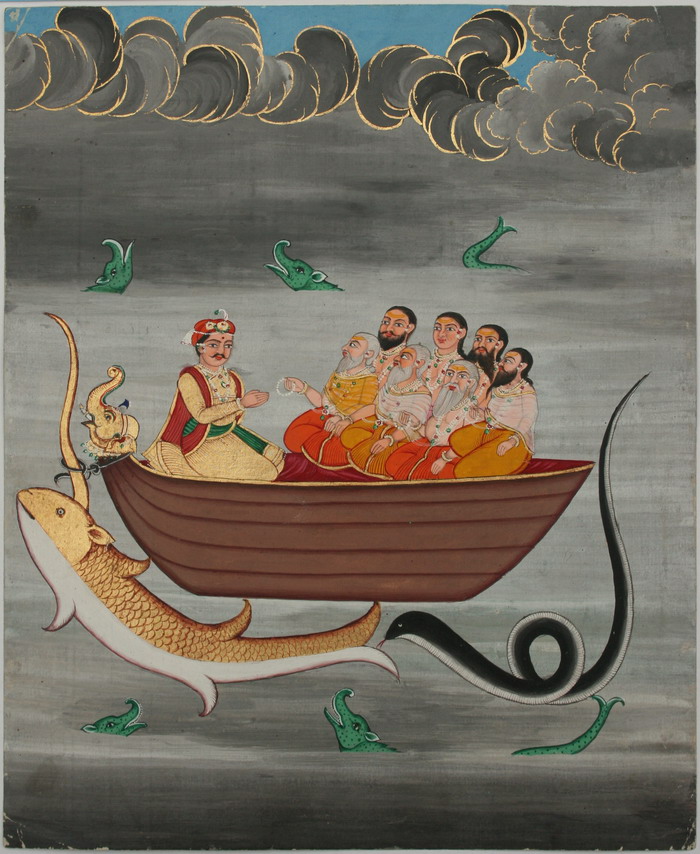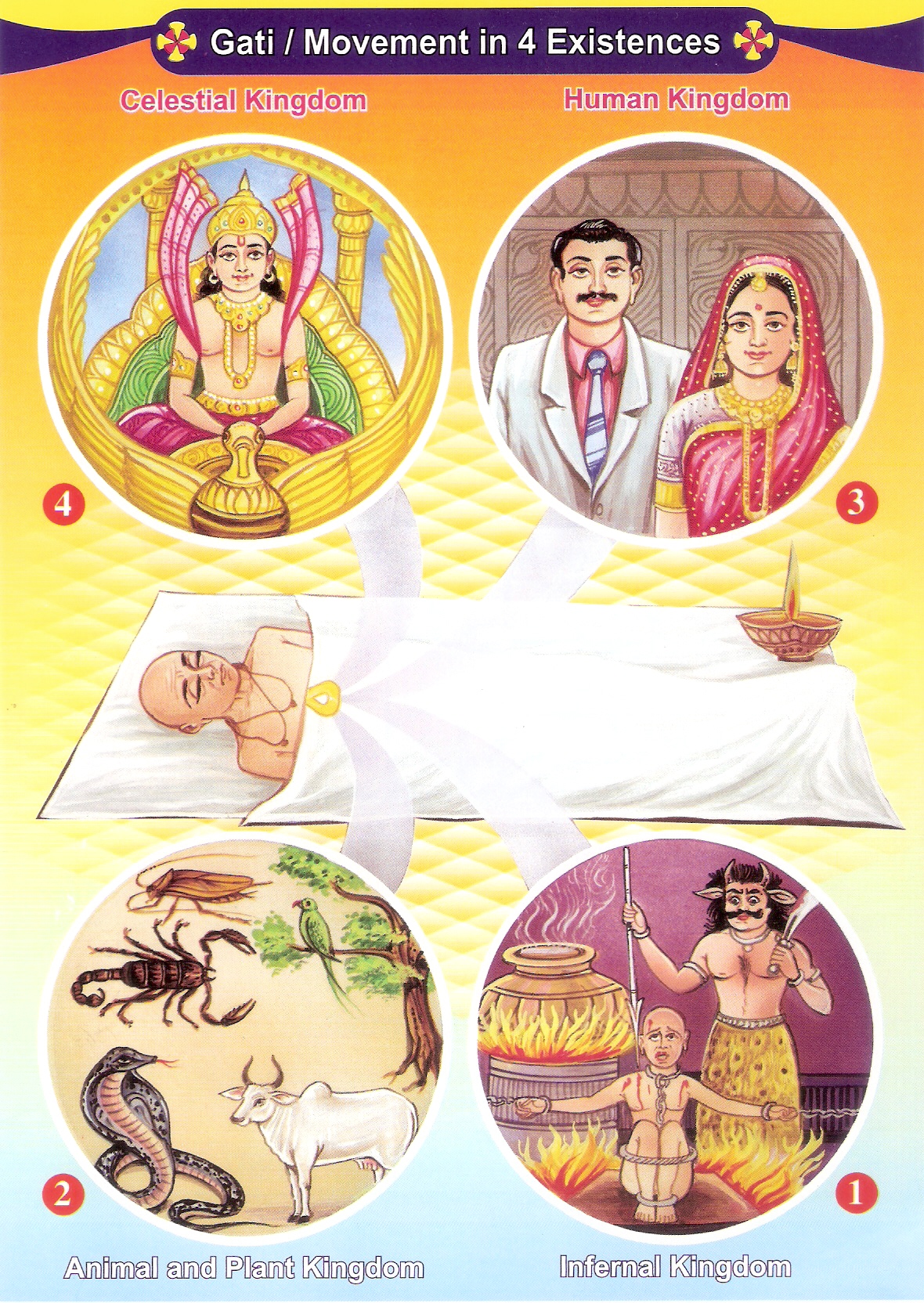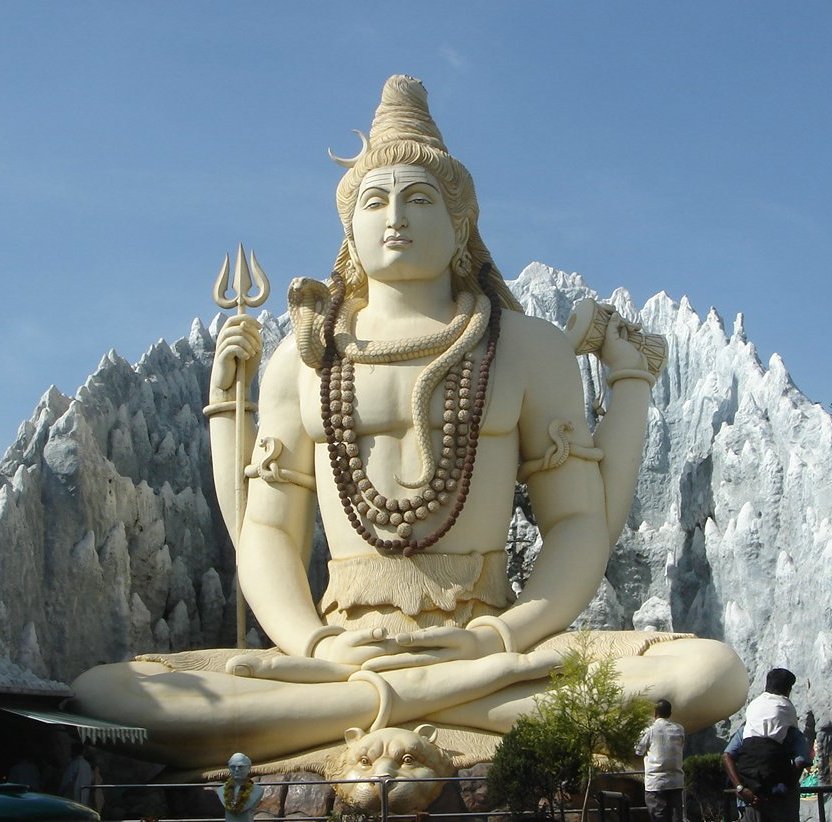|
Sakayanya
Sakayanya, also known as ''Jata Sakayanya'', a descendant of ''Saka'', was a ritual authority and contemporary of ''Sankha'' in the ''Kathaka Samhita'' (xxii.70) also known as ''Charaka Samhita'' belonging to Krishna Yajurveda, and which was compiled by ''Katha'', a disciple of Vaisampayana. Sakayanya was a disciple of Rishi Maitri. And, Shubhra Sharma in his treatise titled - 'Life in the Upanishads' writes that Sakayanya "burns with all the splendor and the grandeur of an incarnation of the Puranic literature, who appears out of the blue and even has the capacity of granting boons". The ideas which Sakayanya expresses were already formed and developed in the earlier Upanishads. Sakayanya speaks about the 'pure noumenal Self' who arising from the body shines in his own splendour, and of the 'phenomenal Self' called the ''Bhutatman'' who is subject to the influence of actions and therefore undergoes transmigration as was taught to him by Rishi Maitri. In the Maitri Upanishad Sa ... [...More Info...] [...Related Items...] OR: [Wikipedia] [Google] [Baidu] |
Brihadratha Ikshvaku
Brihadratha, belonging to the Ikshvaku race, was a king of the Vedic era (there are several kings of this name in Hindu tradition). This name Brihadratha of a warrior king who was a Maharatha is found in the Rig Veda. The word, Brihadratha, means the Mighty Warrior. He appears at the beginning of the Maitri Upanishad after he had renounced his kingdom in favour of his son, seeking for himself relief from the endless cycle of birth and rebirth. No other information about him or his period is available in this text or in any other text. Maitri Upanishad belongs to the Maitrayaniya branch of Krishna Yajur Veda, which upanishad was taught to Sakayana by Maitri or Maitreya, the son of Mitra. Brihadratha chose the knowledge of the Self when he was offered a boon. He gave up his home and possessions and thereafter assisted by Sakayanya even renounced the “I-ness” of his body. Anti-Hedonism, evident in the Katha Upanishad in the refusal of Nachiketa Nachiketa (), also rendered ... [...More Info...] [...Related Items...] OR: [Wikipedia] [Google] [Baidu] |
Yajurveda
The ''Yajurveda'' ( sa, यजुर्वेद, ', from ' meaning "worship", and ''veda'' meaning "knowledge") is the Veda primarily of prose mantras for worship rituals.Michael Witzel (2003), "Vedas and Upaniṣads", in ''The Blackwell Companion to Hinduism'' (Editor: Gavin Flood), Blackwell, , pages 76-77 An ancient Vedic Sanskrit text, it is a compilation of ritual-offering formulas that were said by a priest while an individual performed ritual actions such as those before the yajna fire. Yajurveda is one of the four Vedas, and one of the scriptures of Hinduism. The exact century of Yajurveda's composition is unknown, and estimated by Witzel to be between 1200 and 800 BCE, contemporaneous with Samaveda and Atharvaveda. The Yajurveda is broadly grouped into two – the "black" or "dark" (''Krishna'') Yajurveda and the "white" or "bright" (''Shukla'') Yajurveda. The term "black" implies "the un-arranged, unclear, motley collection" of verses in Yajurveda, in contrast to ... [...More Info...] [...Related Items...] OR: [Wikipedia] [Google] [Baidu] |
Vaisampayana
Vaishampayana ( sa, वैशंपायन, ) is the traditional narrator of the ''Mahabharata'', one of the two major Sanskrit epics of India. Legend Vaishampayana is a renowned sage who is stated to be the original teacher of the ''Krishna Yajur-Veda:'' The ''Ashvalayana Grihya Sutra'' mentions him as ''Mahabharatacharya''. He is also mentioned in the ''Taittiriya Aranayaka'' and the ''Ashtadhyayi'' of Pāṇini. Vyasa Krishna Dvaipayana ( sa, कृष्णद्वैपायन, Kṛṣṇadvaipāyana), better known as Vyasa (; sa, व्यासः, Vyāsaḥ, compiler) or Vedavyasa (वेदव्यासः, ''Veda-vyāsaḥ'', "the one who cl ... is regarded to have taught the ''Mahabharata'' of 100,000 verses to Vaishampayana. He is regarded to have recited the epic to King Janamejaya at his ''sarpa satra'' (snake sacrifice) The Harivamsha Purana is also recited by him, where he narrates the legend of Prithu's emergence from Vena. Reference ... [...More Info...] [...Related Items...] OR: [Wikipedia] [Google] [Baidu] |
Rishi
''Rishi'' () is a term for an accomplished and enlightened person. They find mentions in various Vedic texts. Rishis are believed to have composed hymns of the Vedas. The Post-Vedic tradition of Hinduism regards the rishis as "great yogis" or "sages" who after intense meditation ( tapas) realized the supreme truth and eternal knowledge, which they composed into hymns.Hartmut Scharfe (2002), Handbook of Oriental Studies, BRILL Academic, , pp. 13–15. The term appears in Pali literature as Ishi and in Buddhism, they can be either Buddhas, Paccekabuddhas, Arahats or a monk of high rank. Etymology According to Indian tradition, the word may be derived from two different meanings of the root 'rsh' (). Sanskrit grammarians derive this word from the second meaning: "to go, to move". V. S. Apte gives this particular meaning and derivation, and Monier-Williams also gives the same, with some qualification. Another form of this root means "to flow, to move near by flowing". (All th ... [...More Info...] [...Related Items...] OR: [Wikipedia] [Google] [Baidu] |
Upanishads
The Upanishads (; sa, उपनिषद् ) are late Vedic Sanskrit texts that supplied the basis of later Hindu philosophy.Wendy Doniger (1990), ''Textual Sources for the Study of Hinduism'', 1st Edition, University of Chicago Press, , pages 2-3; Quote: "The Upanishads supply the basis of later Hindu philosophy; they are widely known and quoted by most well-educated Hindus, and their central ideas have also become a part of the spiritual arsenal of rank-and-file Hindus." They are the most recent part of the Vedas, the oldest scriptures of Hinduism, and deal with meditation, philosophy, consciousness, and ontological knowledge; earlier parts of the Vedas deal with mantras, benedictions, rituals, ceremonies, and sacrifices.Gavin Flood (1996), ''An Introduction to Hinduism'', Cambridge University Press, , pp. 35–39A Bhattacharya (2006), ''Hindu Dharma: Introduction to Scriptures and Theology'', , pp. 8–14; George M. Williams (2003), Handbook of Hindu Mythology, Oxford ... [...More Info...] [...Related Items...] OR: [Wikipedia] [Google] [Baidu] |
Transmigration Of The Soul
Reincarnation, also known as rebirth or transmigration, is the philosophical or religious concept that the non-physical essence of a living being begins a new life in a different physical form or body after biological death. Resurrection is a similar process hypothesized by some religions, in which a soul comes back to life in the same body. In most beliefs involving reincarnation, the soul is seen as immortal and the only thing that becomes perishable is the body. Upon death, the soul becomes transmigrated into a new infant (or animal) to live again. The term transmigration means passing of soul from one body to another after death. Reincarnation (''Punarjanma'') is a central tenet of the Indian religions such as Buddhism, Hinduism, Jainism, and Sikhism; as well as certain Paganist religious groups, although there are Hindu and Buddhist groups who do not believe in reincarnation, instead believing in an afterlife. In various forms, it occurs as an esoteric belief in many st ... [...More Info...] [...Related Items...] OR: [Wikipedia] [Google] [Baidu] |
Brahman
In Hinduism, ''Brahman'' ( sa, ब्रह्मन्) connotes the highest universal principle, the ultimate reality in the universe.P. T. Raju (2006), ''Idealistic Thought of India'', Routledge, , page 426 and Conclusion chapter part XII In major schools of Hindu philosophy, it is the material, efficient, formal and final cause of all that exists.For dualism school of Hinduism, see: Francis X. Clooney (2010), ''Hindu God, Christian God: How Reason Helps Break Down the Boundaries between Religions'', Oxford University Press, , pages 51–58, 111–115;For monist school of Hinduism, see: B. Martinez-Bedard (2006), ''Types of Causes in Aristotle and Sankara'', Thesis – Department of Religious Studies (Advisors: Kathryn McClymond and Sandra Dwyer), Georgia State University, pages 18–35 It is the pervasive, infinite, eternal truth, consciousness and bliss which does not change, yet is the cause of all changes. ''Brahman'' as a metaphysical concept refers to the singl ... [...More Info...] [...Related Items...] OR: [Wikipedia] [Google] [Baidu] |
Samkhya
''Samkhya'' or ''Sankya'' (; Sanskrit सांख्य), IAST: ') is a dualistic school of Indian philosophy. It views reality as composed of two independent principles, ''puruṣa'' ('consciousness' or spirit); and ''prakṛti'', (nature or matter, including the human mind and emotions). ''Puruṣa'' is the witness-consciousness. It is absolute, independent, free, beyond perception, above any experience by mind or senses, and impossible to describe in words. Unmanifest ''prakriti'' is matter or nature. It is inactive, unconscious, and is a balance of the three ''guṇas'' (qualities or innate tendencies), namely ''sattva'' , ''rajas'', and '' tamas''. When prakṛti comes into contact with Purusha this balance is disturbed, and Prakriti becomes manifest, evolving twenty-three tattvas, namely intellect (buddhi, mahat), ego (ahamkara) mind ( manas); the five sensory capacities; the five action capacities; and the five "subtle elements" or "modes of sensory content" (''tanma ... [...More Info...] [...Related Items...] OR: [Wikipedia] [Google] [Baidu] |
Yoga
Yoga (; sa, योग, lit=yoke' or 'union ) is a group of physical, mental, and spiritual practices or disciplines which originated in ancient India and aim to control (yoke) and still the mind, recognizing a detached witness-consciousness untouched by the mind (''Chitta'') and mundane suffering ('' Duḥkha''). There is a wide variety of schools of yoga, practices, and goals in Hinduism, Buddhism, and Jainism,Stuart Ray Sarbacker, ''Samādhi: The Numinous and Cessative in Indo-Tibetan Yoga''. SUNY Press, 2005, pp. 1–2.Tattvarthasutra .1 see Manu Doshi (2007) Translation of Tattvarthasutra, Ahmedabad: Shrut Ratnakar p. 102. and traditional and modern yoga is practiced worldwide. Two general theories exist on the origins of yoga. The linear model holds that yoga originated in the Vedic period, as reflected in the Vedic textual corpus, and influenced Buddhism; according to author Edward Fitzpatrick Crangle, this model is mainly supported by Hindu scholars. According ... [...More Info...] [...Related Items...] OR: [Wikipedia] [Google] [Baidu] |
Patanjali
Patanjali ( sa, पतञ्जलि, Patañjali), also called Gonardiya or Gonikaputra, was a Hinduism, Hindu author, mystic and philosopher. Very little is known about him, and while no one knows exactly when he lived; from analysis of his works it is estimated that it was between the 2nd and 4th centuries CE. He is believed to be an author and compiler of a number of Sanskrit literature, Sanskrit works. The greatest of these are the ''Yoga Sutras'', a classical yoga text. There is speculation as to whether the sage Patañjali is the author of all the works attributed to him, as there are a number of known historical authors of the same name. A great deal of scholarship has been devoted over the last century as to the issue of the historicity or identity of this author or these authors. lists ten separate authors by the name of "Patañjali." Amongst the more important authors called Patañjali are: * The author of the ''Mahābhāṣya'', an ancient treatise on Sanskrit gram ... [...More Info...] [...Related Items...] OR: [Wikipedia] [Google] [Baidu] |
Rishis
''Rishi'' () is a term for an accomplished and enlightened person. They find mentions in various Vedic texts. Rishis are believed to have composed hymns of the Vedas. The Post-Vedic tradition of Hinduism regards the rishis as "great yogis" or "sages" who after intense meditation ( tapas) realized the supreme truth and eternal knowledge, which they composed into hymns.Hartmut Scharfe (2002), Handbook of Oriental Studies, BRILL Academic, , pp. 13–15. The term appears in Pali literature as Ishi and in Buddhism, they can be either Buddhas, Paccekabuddhas, Arahats or a monk of high rank. Etymology According to Indian tradition, the word may be derived from two different meanings of the root 'rsh' (). Sanskrit grammarians derive this word from the second meaning: "to go, to move". V. S. Apte gives this particular meaning and derivation, and Monier-Williams also gives the same, with some qualification. Another form of this root means "to flow, to move near by flowing". (All th ... [...More Info...] [...Related Items...] OR: [Wikipedia] [Google] [Baidu] |


.png)



